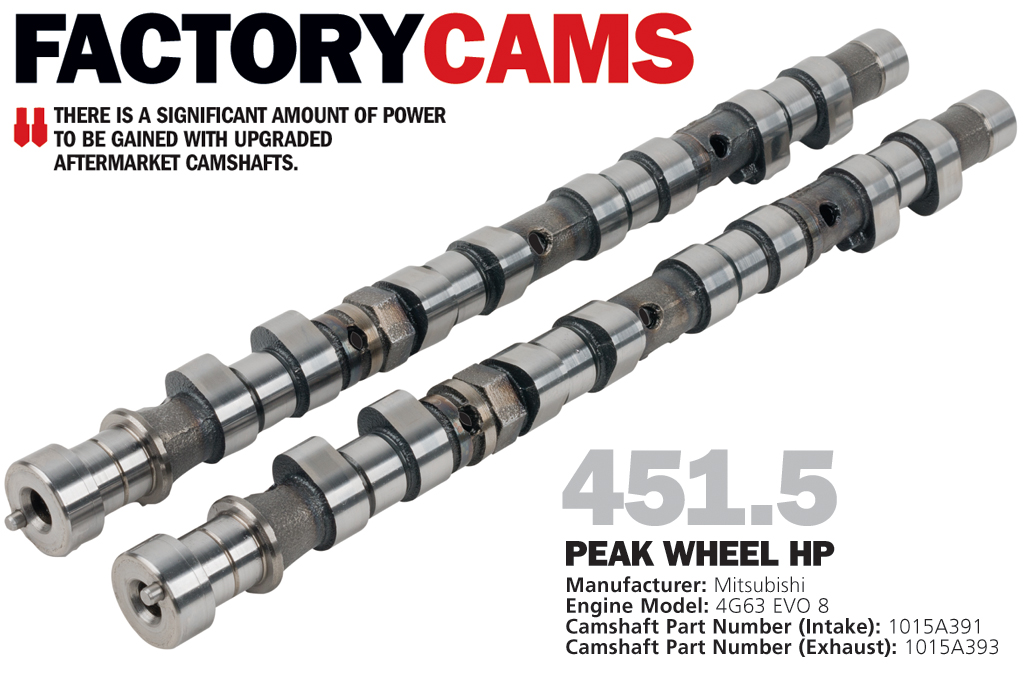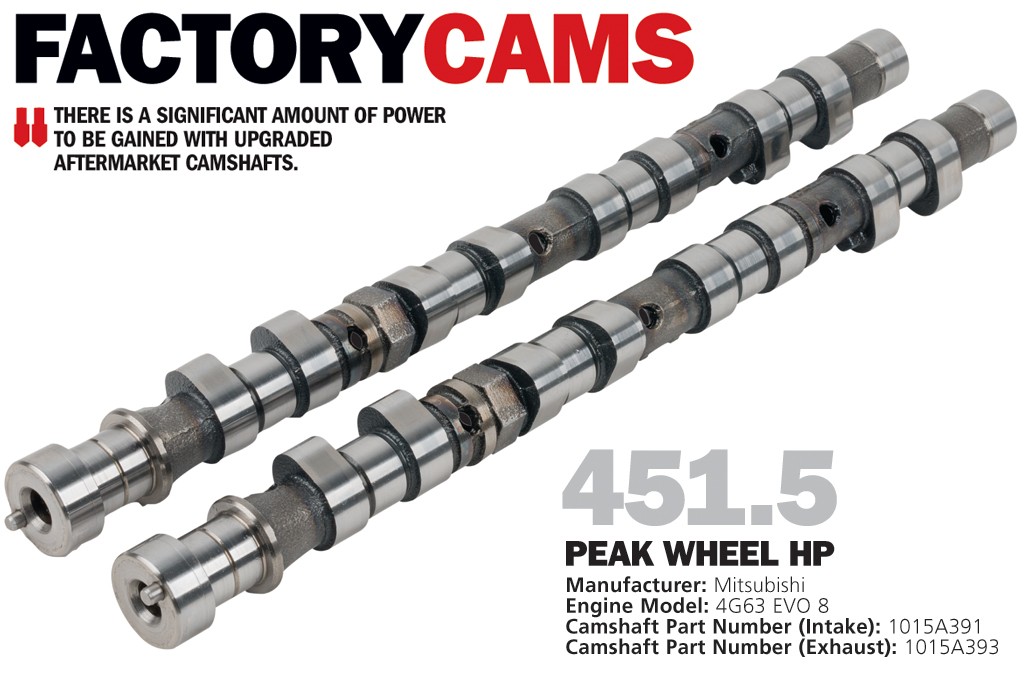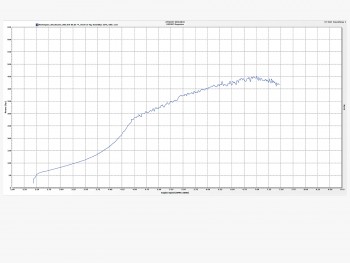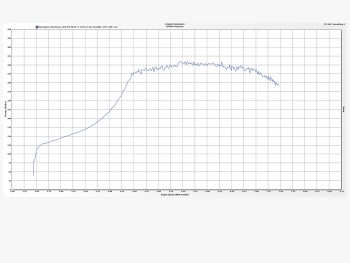| INTAKE | EXHAUST | |
|---|---|---|
| CAM TIMING EVENTS | ||
| Centerline | 109° | 111° |
| Valve Opening @ 1.0mm | 12.5 ATDC | 31.25 BBDC |
| Valve Opening @ 0.050″ | 15.0 ATDC | 27.75 BBDC |
| Valve Closing @ 1.0mm | 32.5 ABDC | 17.25 BTDC |
| Valve Closing @ 0.050″ | 21.0 ABDC | 20.75 BTDC |
| DURATION | ||
| Actual Duration @ 1.0mm | 199.9 | 194.0 |
| Actual Duration @ 0.050″ | 193.0 | 187.0 |
| Claimed Duration @ 1.0mm | N/A | N/A |
| PEAK LIFT | ||
| Peak Valve Lift | 10.0mm (0.393″) | 9.5mm (0.373″) |
| Peak Cam Lift | 5.8mm (0.228″) | 5.5mm (0.215″) |
|
||
INFO
The factory Mitsubishi EVO 8 camshafts provide a smooth idle, clean emissions and decent performance at factory boost and power levels. However, there is a significant amount of power to be gained with upgraded aftermarket camshafts. Running E85, the factory camshafts allowed our engine/turbo combination to produce just under 445 wheel horsepower at 21.5psi of boost pressure. This was running a lambda of 0.85 (gasoline equivalent of 12.5:1 A/F ratio). Comparing the stock cam to the offerings from Kelford show the massive performance gains to be realized with a performance set of cams.
RUNDOWN
451.5 WHP @ 7,000 RPM
359.3 LB-FT @ 5,500 RPM
Peak power checked in at 7,000 RPM with a drop in power as engine RPM moved past this point. Peak boost was reached at about 4,500 RPM. A flat torque band from 4,500 to 7,000 RPM delivered over 320 lb-ft of torque. Peak torque came in at 5,500 RPM. Highest VE values were recorded at 3,500 RPM. The 4,000 and 4,500 RPM VE figures were lower than anticipated due to the use of a large-runner aftermarket intake manifold.
| POWER | VOLUMETRIC EFFICIENCY | |
| RPM | WHP | % |
| 2500 | 49.66 | 80.5 |
| 3000 | 82.45 | 88.2 |
| 3500 | 112.31 | 98.6 |
| 4000 | 166.27 | 85.9 |
| 4500 | 281.42 | 85.0 |
| 5000 | 323.28 | 89.1 |
| 5500 | 371.95 | 92.1 |
| 6000 | 399.03 | 88.7 |
| 6500 | 415.72 | 88.8 |
| 7000 | 451.50 | 84.9 |
| 7500 | N/A | N/A |
| 8000 | N/A | N/A |
| 8500 | N/A | N/A |





